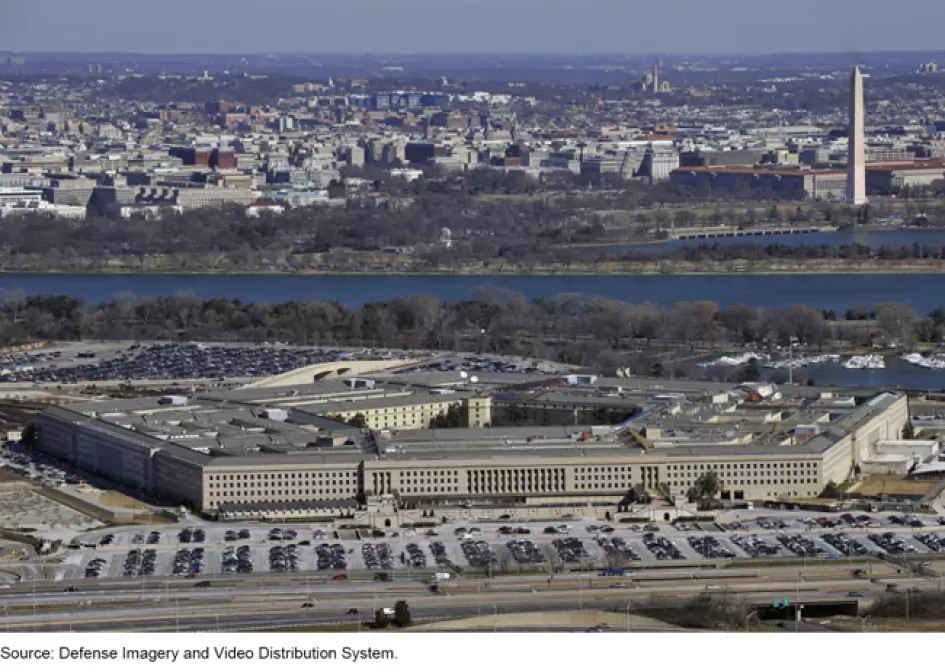New Defense Budget, Existing Opportunities to Improve DOD Business Operations
Last month, the Biden Administration released limited details of its fiscal year 2022 defense budget discretionary request. This information showed that the president intends to request $753 billion for national defense programs for FY 2022, including $715 billion for the Department of Defense.
In anticipation of the administration’s full FY 2022 defense budget request, which is expected to arrive later this month, today’s WatchBlog post explores our work and recommendations for improving DOD’s business operations management. Improving how it implements reforms in its business operations will help DOD ensure that it gets the most “bang for its buck.”
Image

How can DOD improve its financial and other business operations management?
In February, we testified that DOD could enhance its management of defense spending, which would help the department address challenges it faces—especially in a constrained budget environment.
Opportunities we identified included:
- fully obligating its appropriated funds;
- reducing payment errors (in FY 2020, DOD estimated about $11.4 billion in payment errors); and,
- enhancing visibility of future resource requirements, such as ongoing Overseas Contingency Operations costs.
At the end of April, we testified that DOD could enhance its management of its business operations, including how it manages its finances.
Opportunities we identified included:
- establishing a process to standardize documentation of reported cost savings, and ensuring that these reported savings are consistent with the department's definitions of reform;
- improving the quality of performance data; and,
- ensuring those responsible for leading change have clearly defined and documented roles, responsibilities, and authorities.
Clarifying the roles and responsibilities of those tasked with managing business reform remains particularly important as DOD moves to an organization without a Chief Management Officer, a position that was eliminated in 2021.
In both instances, we noted that DOD generally agreed with our recommendations and that officials said the department is working to implement them.
How does DOD document proof of savings?
As part of its efforts to improve how it does business, DOD established valid and reliable cost baselines for some of its enterprise business operations, such as financial and human resource management. Baselines are important because they allow the department to measure progress in cutting costs. DOD officials told GAO they have developed and are continuing to refine baselines for other key business functions. While still in progress, this effort shows promise in meeting the need for consistent baselines for DOD’s reform efforts that GAO has previously identified.
DOD also claimed $37 billion in savings for fiscal years 2017-2021. However, we found that the department had limited documentation regarding the analysis underlying these savings estimates. For example, the department had limited information about the opportunity or implementation costs associated with some of the claimed savings. The department also was not clear about the actions needed to achieve the estimated savings. When DOD provided details, these were usually limited to a brief sentence or two, with little to no supporting documentation.
In other instances, DOD may have overstated savings that came from its reform efforts rather than other sources of savings, like cost avoidance. For example, DOD claimed savings for delayed military construction projects—projects that, if still planned, could result in costs occurring in later years.
We recommended that DOD establish policies to document savings, to ensure the savings are consistent with their definition, and to formalize collaboration among its many components and activities. The recommendations remain open.
Why it matters?
Defense is the single largest category of discretionary spending for the federal government. Decisions by DOD regarding long-term defense needs—including how DOD operates and executes its mission to protect the U.S.—will have meaningful impacts on the nation’s future.
Transformation of DOD’s business operations has been on our High Risk List since 1995. DOD remains the only major agency that has never been able to accurately account for and report on its spending. Sound financial management practices and reliable, useful, and timely financial information would help ensure more efficient management of its budgets.
To learn more, check out our overview of DOD Business Transformation as a High Risk Area.
- Comments on GAO’s WatchBlog? Contact blog@gao.gov.





